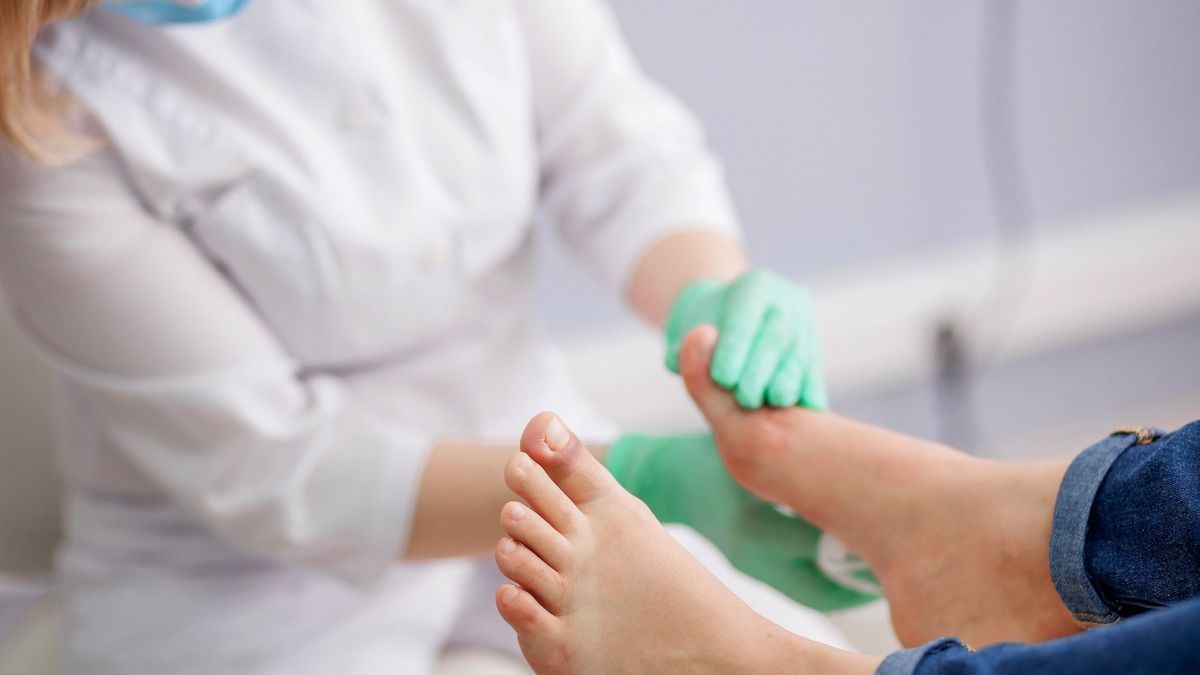
Published on
Updated
Whether temporary or acute, a drop in sensitivity is never trivial. What are the causes, symptoms of hypoesthesia and how to treat it? Doctor Michel Vastène, neurologist at the Clinique du Parc in Castelnau-Le-Lez (Hérault), takes stock.
How to recognize hypoesthesia?
Hypoesthesia (“Hypo” means “less” in Greek and aisthêsis means “sensitivity”) is a sensory disorder corresponding to a reduction in sensitivity. “The loss of sensitivity is not then total otherwise we would speak of anesthesia”, indicates Doctor Michel Vastène, neurologist at the Clinique du Parc in Castelnau-Le-Lez (Hérault). As opposed to hypoesthesia, there are sensory disorders corresponding to excessive sensitivity. In this case we speak of hyperesthesia. Hypoesthesia can affect any part of the body. It can be found on a leg, a foot, a toe, a hand, the face, a half-body as well as on unusual areas such as the tongue.
What are the causes of hypoesthesia?
Hypoesthesia is a symptom that occurs when there is nerve damage to the peripheral nerves, brain, or spinal cord. Trauma to nerve fibers or an illness can be the cause. It can be a stroke, multiple sclerosis, a brain tumor, carpal tunnel syndrome, sciatica, facial neuralgia, etc.
“Hypoesthesia works a bit like an electrical circuit, compare the specialist. If you cut the wires in one place, there will be no light in another place. A stroke located in the right parietal lobe can cause hemiplegia and sensory disturbances on the left side. There’s a logic to all of this.” he says. “Normally the sensory fibers of the nerves of one hand go up the arm, arrive in the spinal cord passing to the other side, and go up to the brain. This ends in the parietal lobe according to a very particular topography which is the same for everyone. For example, sensitivity on the left side of the body is located in the right parietal lobe (see diagram). The face is in the lower outer part of the brain. The leg is inside the parietal lobe inside the brain.”

What are the symptoms associated with hypoesthesia?
Hypoesthesia may be accompanied by paresthesias (tingling, tingling). Hypoesthesia can sometimes be painful with a burning sensation or unpleasant permanent pain or even a feeling of electric shocks. May also occur polyneuritis (several peripheral nerves inflamed). “This is the case, for example, in a person who tends to drink too much alcohol. explains Doctor Michel Vastène. “In this case hypoesthesia occurs on both feet accompanied by a sensation of paresthesias and pain.
Hypoesthesia can appear acutely or occur progressively and chronically.
How is the diagnosis made in cases of hypoesthesia?
To make a diagnosis, the doctor first carries out a clinical examination. It identifies the topography of hypoesthesia which can be located on one side of the body, both feet, both hands, etc.
The doctor continues his diagnosis by asking the patient about his habits. Does he drink alcohol regularly and in large quantities (especially if the hypoesthesia is located on both feet), is he diabetic, has kidney failure, does he have rheumatism, hypothyroidism, a deficiency of certain vitamins , a malignant tumor problem, does he use toxic products (lead, neurotoxic product used in agriculture), what is his job, has he had a recent particular injury? During this examination, the doctor also identifies clinical signs such as motor disorders (hemiplegia), visual disturbances (visual field limited on one side/decreased vision in one eye, particularly in cases of multiple sclerosis). Acute or chronic occurrence is also an indicator.
Depending on these elements and the topography, the doctor may request additional examinations such as an MRI or back scan, a brain MRI, an electromyogram. The doctor may prescribe blood tests in particular to look for an inflammatory syndrome (in the case of malignant tumor, lupus, rheumatism causing nerve damage), diabetes, kidney failure, liver problem (in the case of alcoholism)…
What are the consequences of hypoesthesia?
Hypoesthesia can be an emergency, particularly in the event of a stroke or Guillain-Barré syndrome. “Guillain-Barré syndrome is a rapidly ascending and progressive damage to the peripheral nerves within a few days. describes the neurologist. “Hypoesthesia sets in through the feet, the patient feels paresthesias in the feet, then little by little the phenomenon spreads throughout the lower limbs and then the hands. Paralysis occurs simultaneously. Everything can come together very quickly leading to quadriplegia and respiratory problems. This is an emergency which requires hospitalization with the performance of an electromyogram and a lumbar puncture.
If the numbness occurs suddenly, on only one side of the body, and lasts more than 5 minutes, it is imperative to call emergency services (15 or 112) because it may be a vascular accident. cerebral (stroke).
If the cause of hypoesthesia is less urgent (if the symptoms appear gradually), the phenomenon should not be neglected. It requires a consultation with your doctor or neurologist to carry out an assessment. “A mild stroke may have occurred and may have gone unnoticed. indicates Doctor Michel Vastène. “It is important to carry out additional examinations to avoid recurrence.”
How to treat hypoesthesia?
Hypoesthesia is a symptom revealing a health problem. It can improve when the underlying disease is treated (rebalancing diabetes, correcting kidney failure, treating multiple sclerosis, treating a stroke, a brain tumor, stopping alcohol in case of alcoholism…). “In the case of Guillain-Barré syndrome, intensive care treatment is necessary because there is a risk of respiratory decompensation, points out the neurologist. Venoglobulin infusions are most often performed to combat immune dysregulation.
What prevention?
Generally speaking, in order to minimize the risk of stroke, it is important to have your blood pressure checked by your doctor at least once a year and to take a blood test to monitor your cholesterol level. Not smoking, drinking moderately, eating healthily, and engaging in regular physical activity also contribute to staying in good health. It is also good to rule out signs of sleep apnea.
